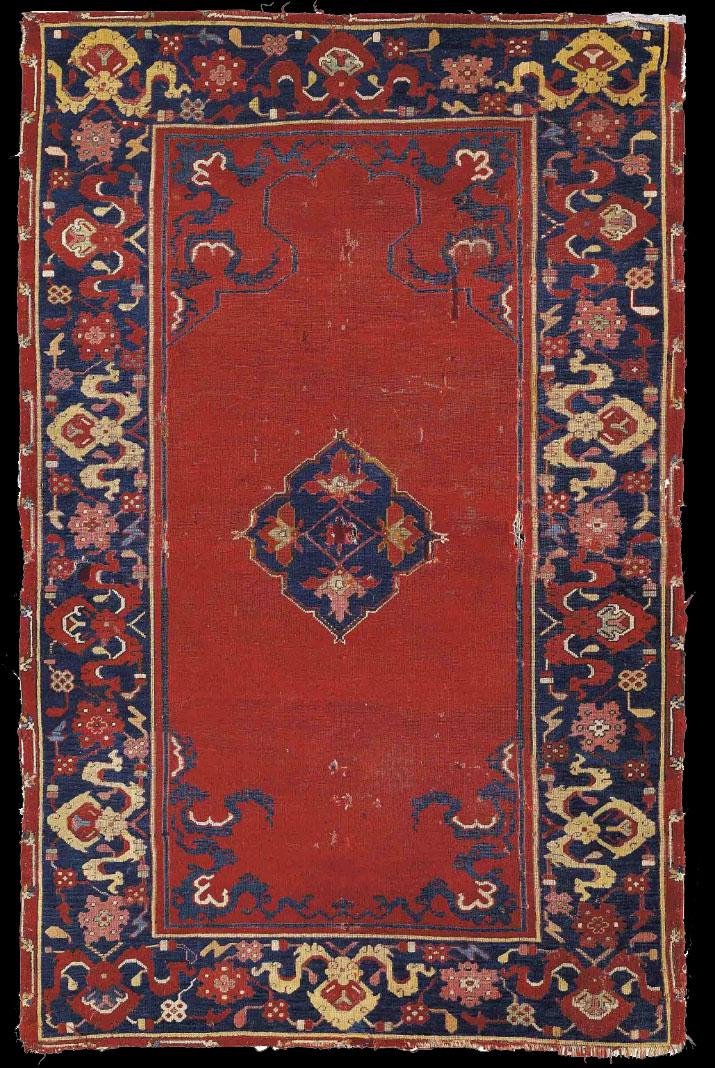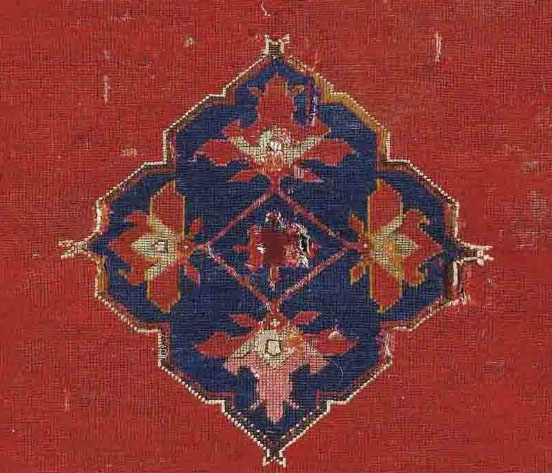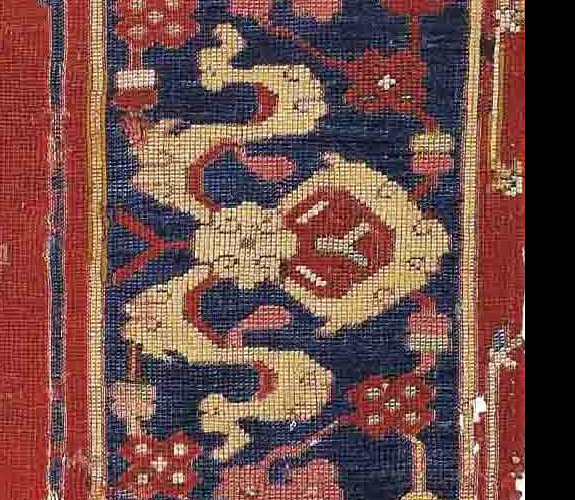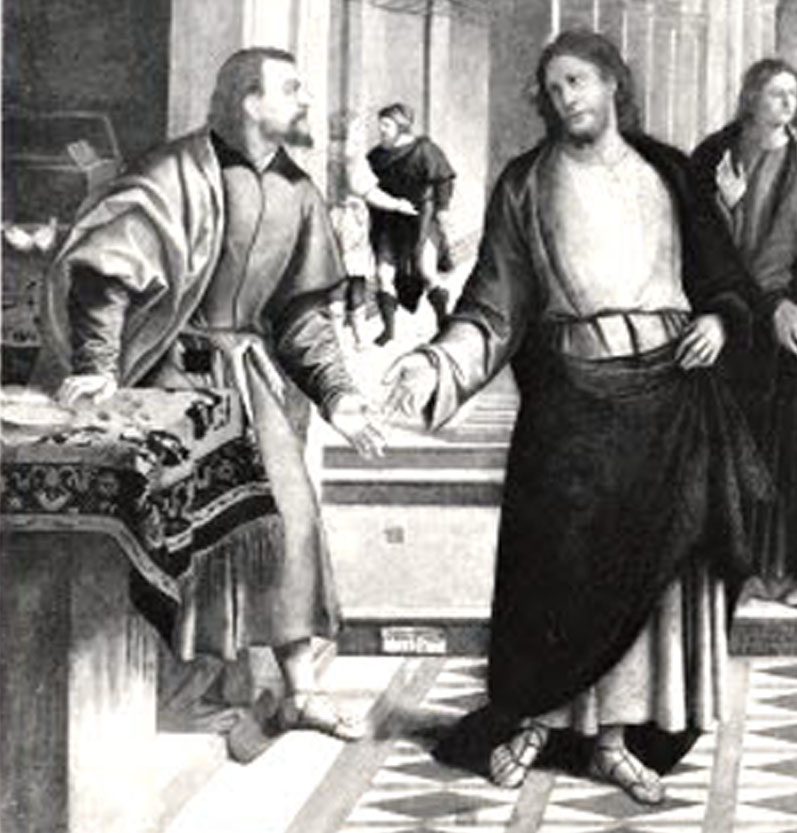|
A SMALL MEDALLION USHAK RUG
WEST ANATOLIA, LATE 16TH CENTURY
Price Realized £181,250 ($279,850)
Sale Information
Christie's SALE 7988 —
ORIENTAL RUGS AND CARPETS
4 October 2011
London, King Street
Lot Description
52-A SMALL MEDALLION USHAK RUG
WEST ANATOLIA, LATE 16TH CENTURY
Localised light wear and corrosion, a couple of old small repairs, edges
slightly tattered
5ft.5in. x 3ft.5in. (164cm. x 105cm.)
Provenance
This rug was bought by Charles-Polycarpe Séchan (1803-1874), interior
designer and theatre decorator. He was employed by the Ottoman sultan in
1853 for the decoration of the palace of Dolmabahce in Besiktas, the old
serail (Topkapi Palace) and the theatre in Constantinople. After his death
the majority of his collection, comprising 947 items, among which were
Turkish and Persian carpets, was sold by the Hotel Druout in 1875. The Iznik
tiles from his collection are today in the Musée de la Renaissance à Ecouen.
This carpet was not included in the sale and has remained in the family ever
since.
Lot Notes
Ushak was a leading centre for carpet production in the 16th and 17th
century where not only large carpets were manufactured such as lot 229 in
this sale but all sizes. Designs included either stars or medallion(s) as
well as prayer rugs of smaller size. The earliest example of a small
medallion or "double-niche" Ushak rug appears in a painting by Gicolamo da
Santacroce, The calling of Saint Matthew, dating from 1517 (J. Mills, "The
Coming of the Carpet to the West", in: The Eastern Carpet in the Western
World, exhibition catalogue, London, 1983, p.16).
The term "double-niche" refers to the looped arch at each end of the field;
most of the rugs have an additional small central medallion. Both the
symmetrical appearance of the field as well as the medallion in these rugs
have led to questions about their intended function. The field of our rug is
asymmetrically designed as if it was clearly meant to be used as a prayer
rug. A comparable example with a yellow medallion is in the Collection of
the Museum of Art, Rhode Island (Through the Collector's Eye. Oriental rugs
from New England Private Collections, exhibition catalogue, Rhode Island
School of Design, 1991, pp.28-29, pl.I). Although only half of that rug is
preserved, it shows the thin line outlining the mihrab along the cloudbands
on one end, as is found in our rug. A nice little feature here is the fact
that this line has the same colour as the cloudbands in the spandrels which
are monochrome blue with minimal white highlights. Examples with a similar
border but not as consistent in the direction of the design and/or with less
well executed corner solutions are illustrated by M. S. Dimand and Jean
Mailey, Oriental Rugs in the Metropolitan Museum of Art, New York, 1973,
p.224, pl.81); by Walter B. Denny, The Classical Tradition in Anatolian
Carpets, exhibition catalogue, New York, 2002, p.83, pl.22, and by Alberto
Boralevi, L'Ushak Castellani-Stroganoff ed altri tappeti Ottomani dal XVI al
XVIII secolo, Florence, 1987, pp.30-31, pl.9).
|




